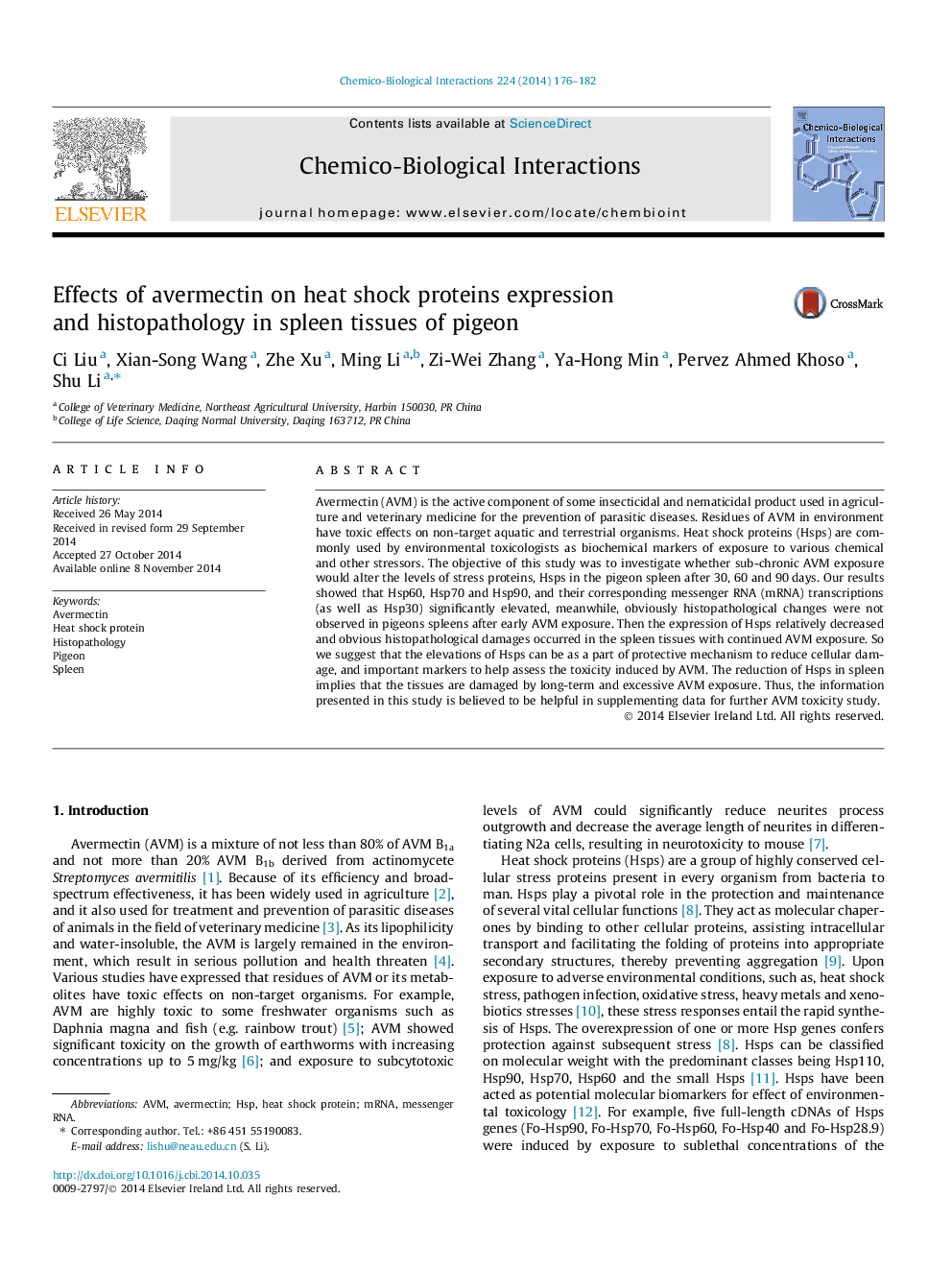| Article ID | Journal | Published Year | Pages | File Type |
|---|---|---|---|---|
| 2580391 | Chemico-Biological Interactions | 2014 | 7 Pages |
•Our aim was to evaluate the toxicity of avermectin on pigeon spleen tissues.•Hsps expression increased and then decreased induced by avermectin exposure.•Oxidative damage promoted the expressions of Hsps in spleen.•Histopathological changes were related to the expressions of Hsps.
Avermectin (AVM) is the active component of some insecticidal and nematicidal product used in agriculture and veterinary medicine for the prevention of parasitic diseases. Residues of AVM in environment have toxic effects on non-target aquatic and terrestrial organisms. Heat shock proteins (Hsps) are commonly used by environmental toxicologists as biochemical markers of exposure to various chemical and other stressors. The objective of this study was to investigate whether sub-chronic AVM exposure would alter the levels of stress proteins, Hsps in the pigeon spleen after 30, 60 and 90 days. Our results showed that Hsp60, Hsp70 and Hsp90, and their corresponding messenger RNA (mRNA) transcriptions (as well as Hsp30) significantly elevated, meanwhile, obviously histopathological changes were not observed in pigeons spleens after early AVM exposure. Then the expression of Hsps relatively decreased and obvious histopathological damages occurred in the spleen tissues with continued AVM exposure. So we suggest that the elevations of Hsps can be as a part of protective mechanism to reduce cellular damage, and important markers to help assess the toxicity induced by AVM. The reduction of Hsps in spleen implies that the tissues are damaged by long-term and excessive AVM exposure. Thus, the information presented in this study is believed to be helpful in supplementing data for further AVM toxicity study.
